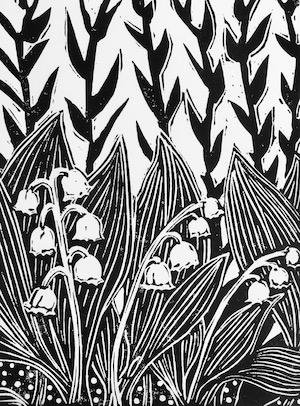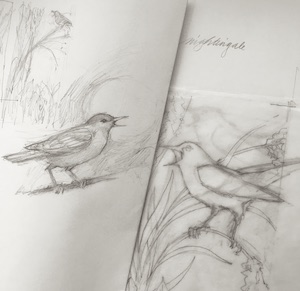
With its sweet, bell-like flowers and heavenly scent, it’s easy to forget that Lily of the Valley is poisonous. It will soon be added to the As Potent as a Charm print series, but working on this version has found me sidetracked by a songbird. Legend has it that a nightingale would not return to the woods until the lily of the valley was in bloom. Among the tales of lily of the valley, this is one of my favorites, and it seemed fitting to include it in the new relief print.
About the nightingale, though – I quickly realized that I knew nothing about its appearance or song, other than the many cultural references in literature and music. How could I have missed such a popular bird? It wasn’t even included in any of my many bird guides, with one telling exception: Song Birds of the World, an old Golden guide book from a long ago library sale. Every other volume contained only North American (mainly Eastern) birds. That is when I realized why I’d neither seen, nor heard, a nightingale. It is native to the old world, residing in Europe and wintering in sub-Saharan Africa. Familiarity with fairy tales and poems made the nightingale seem familiar, too, even though its home is half a world away.
Somewhat smaller than an American Robin (a little larger than European robins), the brown-feathered nightingale is fairly nondescript – until it sings, that is. Its song is why it has been revered by poets and musicians for centuries.

The nightingale has been added to the reeds in the sketch and, following the addition of the lilies of the valley, was refined and inked for transferring to the block.
